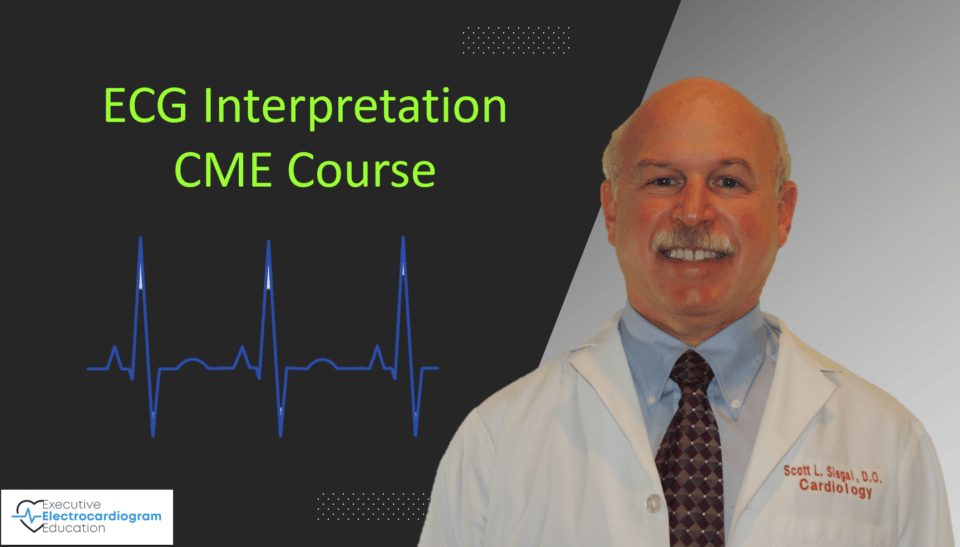ECG Interpretation CME Course is ideal for anyone who wants to learn to read electrocardiograms (ECGs) or hone their skills and wants Category 1 Continuing Medical Education (CME) Credits (Earn up to 8 AOA Category 1A / AMA PRA Category 1 CreditTM). You will learn ECG criteria, arrhythmia interpretation, and most importantly, a systematic approach to reading ECGs.
This course teaches everything from basics to advanced concepts. Beginners and advanced ECG readers will feel comfortable with this course.
ECG Interpretation for CME is an 8-hour online, interactive, video course divided into 40 short chapters. The material can be rewatched as many times as you want to help solidify the information. This course is accessible 24/7/65 on any device. Videos are succinct with detailed illustrations and audio descriptions that go at a gentle pace for better comprehension. Each chapter contains a short self-assessment quiz to help you check your progress if desired. The videos are set up to feel as if a cardiologist is giving you one-on-one instruction. Once the course is complete you are given access to the 20-questions, Category 1 CME test. Successful completion of the test requires an 80% score. Up to three (3) tries are given on the test if needed. Access to the course and test is 1 year from the time of enrollment. Partial credit is not awarded.
Topics include:
- Proper electrode/lead placement
- Understanding the cardiac electrical system and ECG machine basics
- Determining the axis
- Determining the heart rate
- Naming heart rhythms
- Understanding normal and abnormal heart rhythms
- Assessing and distinguishing sinus rhythms, atrial rhythms, junctional rhythms, supraventricular tachycardia, and ventricular rhythms.
- Assessing myocardial ischemia, injury, and infarctions
- Assessing primary and secondary ST and T wave changes
- Distinguishing bundle branch blocks, fascicular blocks, and intraventricular conduction delays
- Assessing left and right ventricular hypertrophy
- Determining atrial abnormalities and hypertrophy
- Assessing the QT interval
- Assessing abnormalities like pericarditis, central nervous system (CNS) effects on the ECG, electrolyte abnormalities, drug effects, hypothermia, and Wolff Parkinson White (WPW).
- Assessing lead reversal, dextrocardia, and pacemakers
- Understanding early and late transition, and poor R-wave progression
- Recognizing low QRS voltage, R on T premature ventricular complexes, Brugada syndrome, electrical alternans, early repolarization, epsilon waves, and Osborn waves.
- Recognizing pacemaker rhythms and ECG changes from cardiac defibrillators
- Recognizing artifact
This course is best for all medical providers who need to learn ECGs (medical students, nurse practitioners, cardiology fellows, residents, and attending providers who want to hone their skills.






